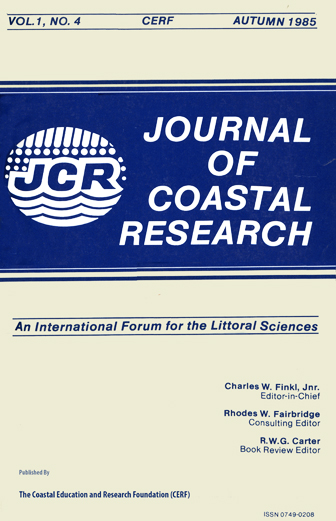Sediment Textural Facies and Bottom Tidal Currents on Crumps Bank and Willoughby Bank,Southern Chesapeake Bay, Virginia, USA
Keywords:
Sediment transport, sediment texture, bottom tidal currents, southern Chesapeake BayAbstract
Within the study area, the general trend in sediment distribution is a decrease in grain size with depth. Coarsest sediment (gravel and coarse sand) are found next to the shore and on the shallowest part of Willoughby Bank as a result of wave action winnowing out fine-grained material. Medium to fine sands are found around Trestle A of the Chesapeake Bay Bridge Tunnel to about 3.5 km west of Trestle A. The sediment source for this area is probably from shore erosion, and material remnant from the construction of Trestle A. Very fine-grained sands and muds make up the major portion of the study area. These sediments are located in a "flood sinus" south of Willoughby Bank and throughout the center portion of the study area. The principal sediment source for the fine-grained sediment is probably the James River and a sewage outfall pipe north of Little Creek Jetty. Fine-grained sediments seem to be concentrated by wave action keeping them in suspension in shallow areas, thus causing them to move and accumulate in areas of deeper, less active water. Even though tidal currents in the deep areas are competent to move sediments they are intermittent, and thus wave action is a major determinant of the sediment distribution. General sediment transport south of Crumps and Willoughby Banks is westerly due to a flood-dominant tidal current. North of Crumps and Willoughby Banks the general direction of sediment transport is easterly due to an ebb-dominant tidal current.


